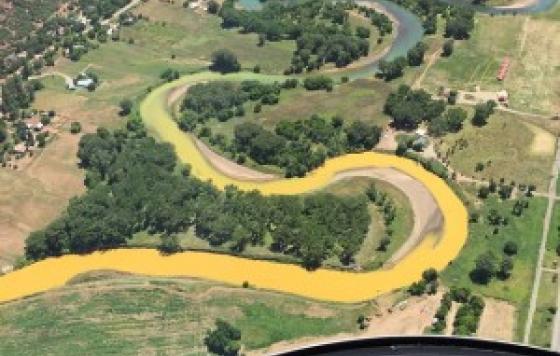
By Andrew Grinberg, California Oil & Gas Program Manager - Follow Andrew on Twitter (@AndrewBGrinberg)
This is the second installment of our ongoing series on California oil and gas policy that will be running throughout the month of July. Click here to see the whole series.
On Tuesday, the State Water Resources Control Board ("Water Board" for short) finalized groundbreaking criteria for monitoring aquifers near fracking operations. Two years after Clean Water Action sponsored legislation to require aquifer testing before and after fracking (AB 982- Williams) California is poised to finally have the information we need to understand the impacts of oil and gas development on groundwater. With extreme drought crippling the Central Valley, where 95% of fracking occurs, and more water crises on the horizon, protecting groundwater from Big Oil is key to California's future.
When Senate Bill 4 (Pavley) passed in 2013, requiring that the state finally start regulating fracking, it also mandated that the Water Board develop criteria for monitoring aquifers that could be impacted by fracking and other forms of well stimulation. Clean Water Action was instrumental in incorporating these groundwater monitoring requirements into the bill and has been the leading the process to make sure they are implemented correctly. After more than a year and half of public workshops, meetings and comment periods, the Board unanimously approved the rules.
Felicia Marcus, Chair of the Water Board said it best: "These rules will enhance our ability to protect groundwater by requiring comprehensive monitoring of groundwater near oil and gas operations -- the strictest monitoring criteria in the nation. The goal is to prevent pollution of water that can be used for drinking water, agriculture and other beneficial uses. And if we then find threats to our groundwater, these rules will allow us to quickly identify and help trace the cause to require those responsible to clean it up."
The new Groundwater Monitoring Criteria outline oil and gas field monitoring rules including which chemicals will be investigated during monitoring, appropriate locations for monitoring wells, public reporting requirements and many other guidelines. The criteria specify both well by well monitoring that must occur when an operator fracks an individual or groups of wells, in addition to regional groundwater monitoring programs that the State Board will be developing over the coming years.
Not surprisingly, throughout the development of these criteria, the oil industry lobbied to narrow the scope. But the State Board held strong and ended up with rules that, if implemented properly, should provide a lot of valuable information. Most importantly, monitoring at the regional level will be designed to detect pollution from a broad set of oil activities, such as the disposal of wastewater into open pits and injection wells, enhanced oil recovery wells, and other surface and below ground activities, reflecting our top priorities.
As we have fought to halt fracking in California, industry has cited a lack of evidence of harm to water resources. This new monitoring program will give us the information we need to determine if there is harm - and we're already finding it. In 2014, the state discovered it had permitted thousands of wastewater and enhanced oil recovery injection wells into protected aquifers. That was a direct result of the Water Board reviewing basic data while it began to develop these monitoring criteria. Now, with a strong set of standards in place, monitoring will help provide insight into what the oil and gas industry is doing to California’s water supply.
And that means an end to decades of Big Oil keeping us from protecting our water by hiding behind a lack of data and evidence. More transparency means more tools to fight for clean water.
The referenced media source is missing and needs to be re-embedded.
A drilling rig in Shafter, CA, where fracking is occurring among almond orchards and right next to homes. Photo Credit: Sarah Craig/Faces of FrackingRelated Posts
Stay Informed
Get the latest updates and actions:
Thanks for signing up!
There was a problem processing your signup. Please try again.


